

Little Professor: 1970 vs. 2010
It’s been helping children all over the world learn their multiplication table for 43 years. It looks like a pocket calculator, is a retro product at its best and yet highly topical. Reason enough to take a closer look at the nostalgic and the new version of «Little Professor» – and to give them away to a lucky winner!
1976 was a great year for technology and science: on 1 April, Steve Wozniak introduced the Apple I. On 4 May, the LAGEOS 1 laser satellite was launched into orbit from Cape Canaveral. It was designed to measure the earth's surface and has an estimated lifespan of eight million years. On 20 July, the unmanned NASA orbiter Viking 1 successfully landed on Mars.
But another achievement was the secret star of this year – that’s if you’re aware that children are our future and that NASA would never made it to the red planet without mathematics. The star invention from 1976 still today makes sure that kids around the world can practise their multiplication tables by themselves.
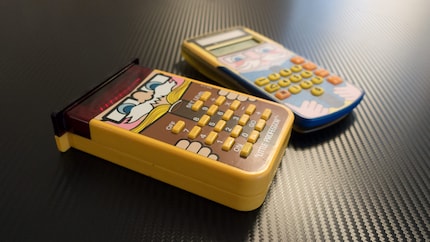
This is the Little Professor from the 1970s and behind it the current version.
The Little Professor is based on a simple principle: it randomly presents incomplete equations – additions, subtractions, divisions or multiplications – and, depending on the version, gives the player a score after five or ten answers. Of course, it comes with several levels to address children of different ages. According to the manufacturer, this backwards-functioning calculator is recommended for children from 6 to 11 years of age.
1970 vs. 2010 version
The Little Professor cost less than $20 when it was launched. I bought one from 1978 (third generation) for $43 including shipping costs. It came with a small booklet titled «Fun with Math Facts», which contains 18 learning games in addition to the user manual. Check it out here.
The booklet no longer exists in the current version. But the Little Professor is only half as thick and doesn’t need a 9V battery anymore.

Here are the details of the two calculators:
| Little Professor Solar | Little Professor (1970, third version) | |
|---|---|---|
| Dimensions | 15 × 7.5 × 1.2 cm | 12.6 × 8.8 × 2.6 cm |
| Weight | 110 g | 107 g (without battery) |
| Power supply | Solar | 9V block battery |
| Operations | Addition, subtraction, division, multiplication, multiplication tables | Addition, subtraction, division, multiplication |
| Difficulty levels | 5 | 4 |
| Number of exercises until points scoring | 5 | 10 |
| Pre-programmed tasks | 80,000 | 16,000 |
When Texas Instruments implemented the first version in 1976, they used the technology of a TI-1200 calculator. At that time, the Little Professor had two slide switches: one to turn on power and one to select the level. But these were replaced by buttons in 1978. Further adjustments were made later; more exercises were added, the design was made slimmer and the battery no longer necessary. Regarding its range of functions, the largest difference today is that only five exercises (instead of ten) are solved in a row. Besides, today’s version only allows two attempts to solve a problem while the 1970s version allowed three. On top of this, a «multiplication table function» was added, which allows kids to practise tasks involving a predefined number. Multiplications with the number 12, for instance.
Playing on the Professors
The solar Professor doesn't need to be switched on, as it runs automatically in minimal light. The retro model, on the other hand, has an on and an off button. Before you play, all you need to do is select the desired level and the operation you'd like to work on. To start the game, the older model requires you to push the «Go» button. The new one starts right away.
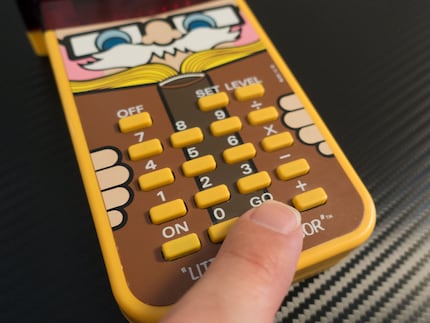
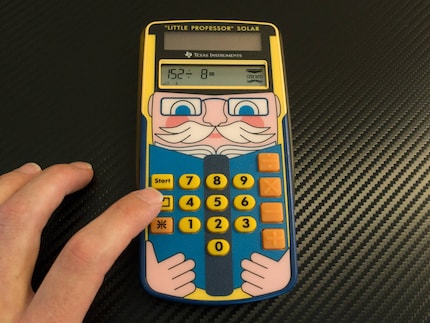
If you answer correctly, the older model gives you the next question straight away. The new model has a little animated professor who wiggles his hat and moustache as a sign of success before the next question is asked. In addition, the new model rewards every correct answer with a star.
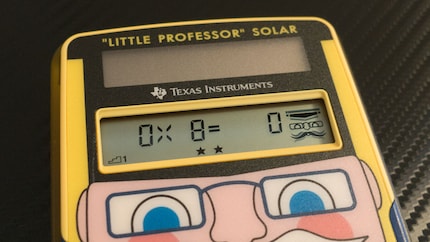
If you answer a question incorrectly, «EEE» appears on the display for the 1970 model and you have two more attempts to give the correct answer. In the solar model, «Err» is displayed for the wrong answer and you have one more chance to give the right answer. If you enter the wrong answer again, the Professor displays the correct answer before the next question is asked.
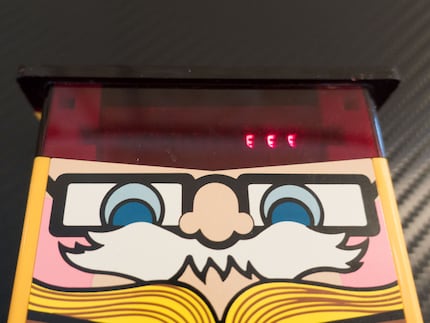
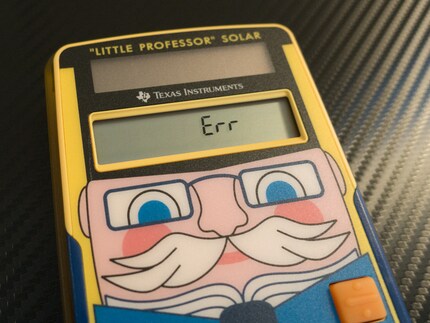
Once you have completed a series of tasks, both calculators reveal how many correct answers you gave. The old version shows the number of correct answers only while the new version shows how many correct and how many incorrect answers there were.
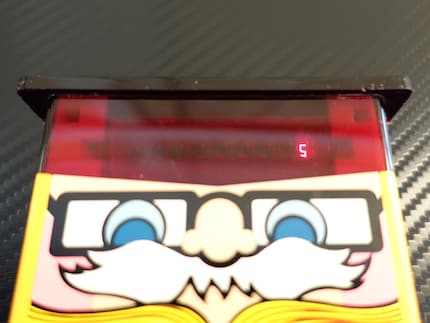
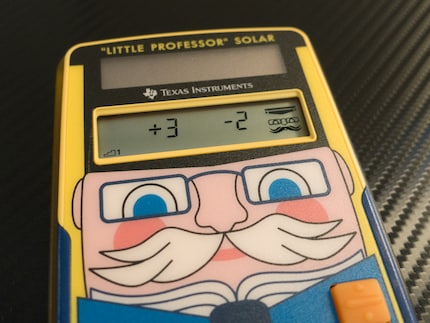
A never-ending success story
The Little Professor has been sold millions of times worldwide. It's a success story – and rightly so. The idea of a backwards-functioning calculator is simple, but equally brilliant. This little gadget surely helps many children to learn and practise maths in a fun and easy way. Growing up in the 1980s, I would have loved this calculator. Which reminds me I have a bone to pick with my parents: why did I only get a slide rule and textbooks when I was a kid?
To avoid your child having to practise maths without a Little Professor calculator, I’m giving away both of them.
Competition: 2 x Little Professor
Yes, I want to win the two Little Professor!
The competition has ended.
Closing date for entries is 31 August 2019. No correspondence will be entered into.
I find my muse in everything. When I don’t, I draw inspiration from daydreaming. After all, if you dream, you don’t sleep through life.


